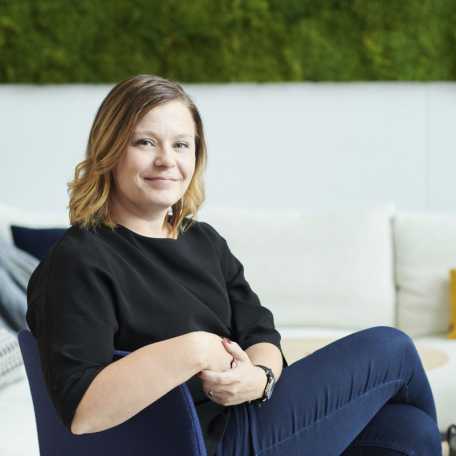Blog: Eeva Terävä, Head of Workplace Development, Martela
There has been a broad change from personal to open-plan offices in workplaces. This change has had a profound impact on employees, as our Martela Insights database shows.
Martela Insights contains the evaluations of more than 5,200 clerical workers in Finland, Sweden and Norway on their workspaces and their suitability. According to the data, nearly 60 % of knowledge workers in the Nordic countries say that their work is interrupted either quite often or too often. For open-plan offices, almost 70 % of the respondents report such interruptions. The most typical causes are colleagues’ conversations and calls.
I’m often asked what you can do: should we return to personal offices?
That is unlikely to happen. The main reason is that the peace of a personal office can also be achieved in an open-plan one.
Rules are not enough without the right conditions
Open-plan offices have two main benefits over personal ones.
Firstly, open-plan offices typically require half the space of personal rooms. And when half of workstations are always empty, it is difficult to justify personal offices.
On the other hand, changes in the way we work do not favour separated work spaces. Modern solution-centric specialist work requires collaboration and continuous communication between people.
But the ways and methods of work that suit private rooms do not suit open offices. When conversations held within the confines of a room take place at workstations in an open office, they wreak havoc on concentration.
That is why rules are needed for conversations at workstations. But since the entire office cannot be quiet, suitable spaces are needed for conversations, calls and web meetings. Fortunately there are many efficient solutions to manage the soundscape of a workplace, such as our recently introduced phone booth, the movable PodBooth.
A peaceful environments requires an ecosystem
Does your organisation have an open-plan office where atmosphere, comfort and quality of work suffer from office noise? It may be easier than you think to make a change for the better.
It doesn’t take rocket science to turn an open-plan office into an activity-based office where all forms of work have a place. In fact, it is relatively simple to turn an open office into a workplace with dedicated areas for concentration, group work, exchange of ideas and recovery.
The change may of course require a comprehensive reorganisation of the physical features of the office into different zones. But the project is in any case simpler and easier than getting rid of personal offices. Sometimes you can even use your old furniture; you just need to reshuffle it.
The new work environment of Felm (Finnish Evangelical Lutheran Mission) was planned so that it has dedicated spaces and areas for interaction and for work that requires concentration and quiet. These spaces area carefully placed so that the working café and the co-working spaces are near the entrance where people move around the most. The quiet areas are at the back of the office.
An activity-based office that provides peaceful conditions and takes into account different ways of working is like an ecosystem. Each form of work has its own, natural place where people can go depending on what they are doing and how much peace they, as individuals, require.
In a well-planned activity-based office the soundscape is managed with different materials and elements. There is also a space for getting away from stress and recovery where you can take a moment’s rest or maybe create something with your hands.
People naturally look for the easiest and most efficient solution – just look how people tread shortcuts across a lawn or a snow-covered yard. When the appropriate way to communicate in a workplace has been made easy, it will be simple for everyone to find what’s best for them.
